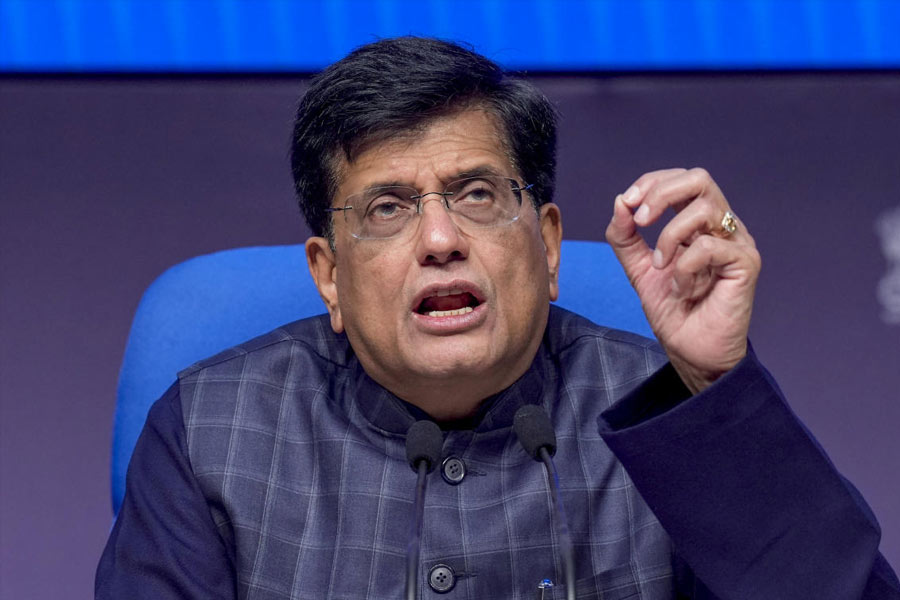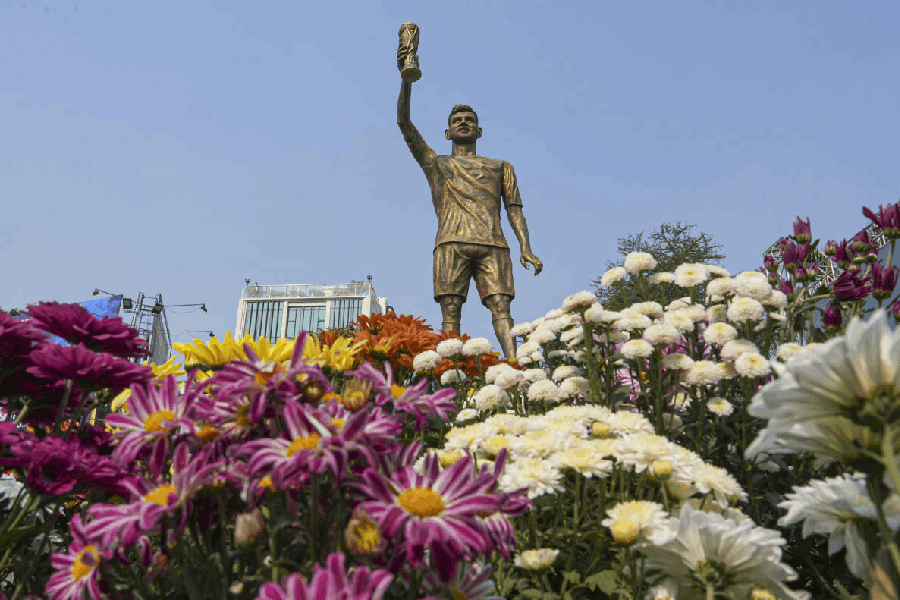 |
 |
| C. Krishna Prasad and his wife Uma Chigurupati are determined to make world-class wines at their boutique winery in Hampi; Photograph courtesy C. Krishna Prasad and Uma Chigurupati |
The Kaveri River flows lazily in the distance and the soothing paddy-field-and-coconut-plantation landscape hides the ferment taking place a short distance away. Here just beyond the sleepy village of Holesalu in Talakad district — about three hours from Bangalore on the road to Mysore — on a huge 1,250 acres spread, T. Raghavendra Gowda, 33, is raising an ambitious toast to his newly launched Rs 125-crore state-of-the-art Alpine Wineries. “I want to show that you can make world-class wines in India,” says Gowda emphatically.
Gowda’s made a splashy start but he’s not the only person raising a glass or two in the wine business in Karnataka. Indeed, the country’s second-largest wine-producing state is on a fresh high as a host of new wineries get ready to uncork their wares. They’re banking on growing wine consumption in India and they’re determined to put Karnataka on the global wine map.
Take a look at C. Krishna Prasad, who owns pharma company Granules India, and his wife Uma Chigurupati. The Hyderabad-based couple — they’re both keen marathon runners — have established a high-end boutique winery near Hampi in Karnataka (about six hours from Hyderabad). Prasad, who’s a wine connoisseur, had grand dreams which he is turning into down-to-earth reality. “I always thought I’d buy a vineyard in France or Italy or Spain one day and retire there,” he says in a matter-of-fact tone. But that was only till he “fell in love with the land and soil” at Hampi in 2008.
Now, the couple is determined to produce super-premium wines at their 80,000-litre winery, KRSMA Estates. They’ve crushed three harvests already but they’ll only release their wines next year. “I want to put Hampi Hills on the global map,” says Prasad firmly.
 |
| T. Raghavendra Gowda has made a splashy entry into the wine business with his mega Rs 125-crore Alpine Wineries; Pic by Jagadeesh N V |
Cut to Doddaballapur outside Bangalore. D.N. ‘Darby’ Raju has been supplying grapes to the giant Grover Vineyards for nearly a decade. Now Raju wants to sip more deeply on the wine industry and he plans to market his own Soma wines by the year-end. He radiates confidence as he surveys his picturesque 120-acre Soma Vineyards with its coconut and teak trees, located on the banks of a lake and flanked by hills.
The new entrants are looking at all kinds of models from boutique to large-scale wineries to wine tourism. And the farmers-turned-winemakers are drawing lessons from Maharashtra too where many new wines have collapsed after a brief shelf-life.
They’re already making quality produce. Three months ago, leading grape farmer K.H. Krishna Reddy launched his Blackbuck wines from his sprawling 500-acre Krishnamruga Vineyard in Maidenahalli, 130km from Bangalore. Now, his Viognier white wine is already winning accolades from critics.
 |
 |
| John Distilleries chairman Paul John (top) is focusing on quality with his Big Banyan wines even as his assistant winemaker Sneha Rao (above) is excited about Big Banyan’s new entry-level Ampersand range; Pix by Jagadeesh N V |
Others like the upcoming boutique SDU Winery are also aiming at producing top quality products. SDU is owned by mineral water-to-real estate entrepreneur Umesh Hingorani and his wife. Their seven-year-old vineyards are in Gauribiddanur in the Nandi Hills region and they’ll launch their wines by the year-end. Says wine consultant Alok Chandra, who put together the project: “The idea is to make small quantities of good quality wine.”
There are also other existing players who are looking to pour out a greater share of the market for themselves. Take the colourful real-estate-to-hospitality entrepreneur K. Surya Narayan Raju, who launched the Kinvah wine brand in 2008 with a high-decibel marketing campaign even though he didn’t own a winery at the time. The Kinvah wines were bottled at an existing winery in Bijapur. But now, Raju’s just set up his own 3,00,000-litre Nandi Valley Winery. “We need to offer a range of boutique wines to customers today. That’s why we’ve set up our own winery,” he says.
Or look at Big Banyan, which is part of the Bangalore-based John Distilleries. For the last five years the company has made wine at a plant in Goa but now it will also be bottling in Karnataka. “State government taxation policies have forced us to look at production in multiple locations. But we’ll continue to focus on quality rather than volumes,” says Paul P. John, chairman, John Distilleries, who also owns the upscale Kumarakom Lake Resort in Kerala.
 |
| K. Surya Narayan Raju, who owns the high-profile Kinvah wine brand, will offer a wider range of wines from his new Nandi Valley Winery;Pic by Jagadeesh N V |
Meanwhile, Heritage Grape Winery’s P.L.V. Reddy, who entered the fortified wine business in 2004, is now offering a wider choice by launching his first table wines earlier this year.
What’s causing this wine boom in the southern state? Well, it all began when the Karnataka Wine Board and State Department of Horticulture launched its Karnataka Grape Wine Policy in 2007-08. Like in Maharashtra, this encouraged new vineyards and wineries by providing subsidies and easing licensing norms. It also imposed a protectionist entry tax on wines from other states. As a result, 12 new wineries, like Rico and Elite, which bottles for Sula, have come up since 2008. Most of them sell in Karnataka alone. “New wineries have come up because of the board’s initiatives and as consumption is increasing among Bangalore’s growing youth population,” says K.G. Suresh Chandran, managing director, Karnataka Wine Board.
According to wine consultant Chandra, wine sales in Karnataka have tripled from around 5,000 cases a month in 2007 to nearly 15,000 cases a month today. “The scope for growth is several-fold,” says Chandra.
 |
 |
| Darby Raju (above) is eager to lure tourists and sell his boutique estate wine too from his picturesque Soma Vineyards near Bangalore |
Chandran too points out that the recent international wine festival hosted by the wine board saw sales of 800 cases in three days. “We want to take this to the districts now,” he says. That’s not all. The board’s issuing cheaper licences for wine taverns (it’s a licence for restaurants to serve wine) and wine boutiques (exclusive wine outlets), which is opening new avenues for sales.
No wonder, the new players are on a high. The most ambitious entrant is Gowda, who’s roped in leading wine consultant Stéphane Derenoncourt — he’s also the winemaker for Francis Ford Coppola’s famed winery in California — to lend his expertise.
Gowda’s tryst with wine began nearly nine years ago. He was handling his family-owned SPR Group’s liquor retailing operations then. “I used to think that wine was for women. But then my Austrian girlfriend introduced me to wine and I began enjoying it,” he says. But it was only after interacting with a grape farmer in Austria that he became fascinated by the complex world of rootstocks and clones. He did a short viticulture course in 2004 and then interned at some Bordeaux estates in 2005.
By 2007, Gowda knew he wanted to set up a vineyard and began planting on an experimental 45-acre plot after importing 50,000 plants from France and Austria. His ambitions soon expanded into a desire to make “world-class wines for the Indian market”.
Gowda has meticulously executed his vision in the last five years down to importing equipment from 16 countries. He began by creating infrastructure on his 1,250-acre land, which had been untended for 35 years. So he built two water ponds and got a dedicated power line. He even got an Israeli firm to install an automated drip irrigation system, apart from setting up two Internet-based weather stations for accurate forecasts. “We are in control now,” says Gowda.
In the vineyards too, it’s been an “intensive” experiment. First Gowda selected 12 types of grape varieties like Shiraz and Melbac and then he began commercial plantation on 247 acres in 2010 by importing 500,000 plants. His 8,00,000-litre temperature-controlled winery — it has an in-built capacity of 4 million litres — has been designed by an Austrian architect. All processes are computerised and Derenoncourt’s viticulture and wine-making experts are constantly on hand.
 |
 |
| The Heritage Grape Winery kiosk at the recent International Wine Festival 2012 in Bangalore; (top) new entrant Krishnamruga Winery’s Blackbuck wines are already winning accolades |
The market’s already given the thumbs up to Gowda’s Oro, Vindiva Classic and Vindiva Reserve red wines. Alpine crushed 3,00,000 litres in 2011 and 4,00,000 litres wine this year. Gowda, who’ll launch his white wines next, is eyeing the southern states next besides aiming for exports to Sri Lanka and China. He expects to break even in three years. But it won’t be easy. “If I can get people to come and see what we’ve done, I’m sure they’ll buy our wine,” he says confidently.
Not everyone’s as adventurous as Gowda. KRSMA Estates’ Prasad says: “Only someone with moneybags can survive this business. That’s why I’m going slow. We want to establish our quality first and then expand.”
Prasad’s passion for wines began at age 16 when he saw the Christian missionaries in his hometown Guntur make wine. By 22, he was fermenting wines at home. Later, his business trips abroad allowed him to indulge his passion, visiting vineyards around the world.
The passion turned into an on-the-ground enterprise after a chance visit to a vineyard near Hampi in 2008. “We liked the place so much that we said let’s do a winery here,” says Chigurupati, who has a master’s degree in plant technology and soil microbiology.
So, they roped in Australian viticulturist Peter Hayes. They even did courses at the premier UC Davis in California. The couple, who have invested around Rs 6.5 crore, have cultivated 30 acres of their 100-acre vineyard since 2009. They’re focusing on producing the best fruit first. “Good wine is made in the vineyard,” says Chigurupati.
They crushed their first Cabernet in 2010 and also bottled the 2011 wines recently while the 2012 wines are in the barrel. But they’re in no rush to market. “We’re in no hurry. Let the wines age peacefully,” says Prasad, who’s convinced the wines have gotten better each year. For instance, he’s thrilled with the intensity of his 2012 grapes. “It will be a fantastic wine and by 2013, I think we will have a world-class wine,” he says.
Prasad plans to launch his 2010 Cabernet and a Sauvignon Blanc next year. He’s aiming for the super-premium market and will produce only 4,000-5,000 bottles a year initially. And he’s not confining himself to India either. “In our pharma business, the world is our market. So, in wine too, we’ll formulate a global strategy,” he says.
Meanwhile, Darby Raju, who runs an industrial noise control consultancy, will also make boutique estate wines at Doddaballapur. The adventure-loving Darby — he’s a keen mountaineer — was a pioneering rose cultivator before he began growing grapes after meeting the Grovers in 2000-01. “I went from roses to rosé,” he laughs. Three years ago, Darby decided he wanted to produce his own wines and lure wine tourists too. “I want to make a 100 per cent boutique wine with grapes from my own estate,” says Darby, who plans to launch his Soma wines by the year-end. He’s targeting day tourists initially but will build cottages later. “It’s the combination of being here, experiencing the vineyard and drinking from it. Once you’ve done that, you’ll become a friend of Soma and that’s what we want,” he says.
The Rs 5-crore SDU Winery too will launch two red wines — a Shiraz and a Cabernet — by the year-end. “We’ve got good quality reds,” says Chandra. And Krishnamruga’s Krishna Reddy, who supplied grapes to Grovers for seven years before setting up his 2,00,000-litre winery in 2011, is also confident of his wines. “We grow the best grapes so we’re confident of making good wine,” he says.
The existing players like Big Banyan and Grover too are aiming to keep up their steady growth. Big Banyan has built its 15,000-case brand on the quality premise since 2007. “We’d like to establish ourselves in our existing markets and experiment with more varietals here,” says Sridhar Pongur, joint managing director and CEO, John Distilleries. So two months ago, Big Banyan launched its mid-market Ampersand wines. Later this year, it will launch a Merlot, Chardonnay and reserve Shiraz. “Ampersand is a no-fuss entry-level wine that’s easy to appreciate before you move on to our premium wines,” says assistant wine-maker Sneha Rao, who’s one of the few women wine-makers in the country.
But is the Karnataka market large enough to sustain all the players? In the short run, supply is bound to exceed demand and marketing will be the biggest challenge. Heritage Grape Winery’s P.L.V. Reddy, who makes his money in real estate, even says: “We’re in the wine business because it’s fashionable and we know it will take time to recover our investments.”
Indeed, the gestation period for a wine project is at least five years. That’s why Kapil Grover of Grover Vineyards warns: “Wine is a business of passion. It looks glamorous from the outside but it’s the easiest way to lose your money.”
Then, there’s the danger of going the Maharashtra way too, where several new players had rushed in without understanding the perils of selling wines in India with its multiple state taxes. Now, over 40 Maharashtra wineries are said to be on the verge of closing down.
The new players are aware of these dangers. Yet, they’re determined to raise a toast and prove that they can produce world-class wine in Karnataka.










